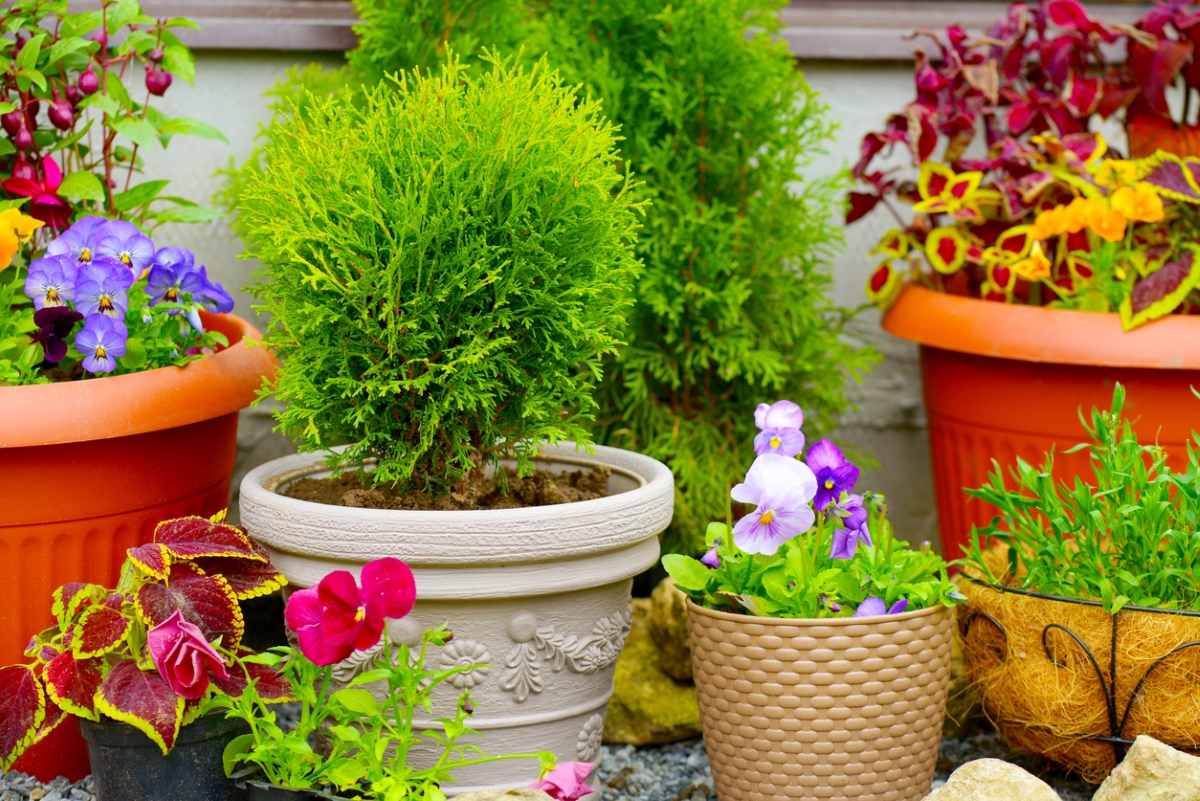

We may earn revenue from the products available on this page and participate in affiliate programs. Learn More ›
Gardeners might have any number of reasons for wanting to grow plants or trees in containers. Not everyone has an expansive yard in which they can plant endless trees or shrubs. And some folks may find a tall plant in a big container adds a dramatic flair to a patio. Still others might want to grow a type of tree that cannot survive their winters, and needs to come inside when the weather cools. If any of these situations applies to you, consider adding a portable, container-grown tree or shrub to your plant collection.
How to Select Potted Trees and Shrubs
A little advance planning will ensure that your container-grown shrub or tree has the best chance at success:
- For shrubs, select a pot that holds at least 3 gallons of soil or potting mix.
- For trees, 5-gallon pots (or larger) are best.
- Before buying a shrub or tree, research the plant’s mature size when grown in a container, especially if you want to cultivate it indoors or bring it inside over the winter.
- Plants that spend the winter outdoors should be hardy (perennial) in your location. Check the USDA Plant Hardiness Map to determine whether the tree or shrub you want is well suited to your region.
- Slower-growing trees and shrubs will provide years of shade, foliage, and blooms, so they are a better investment than varieties that quickly outgrow a planter or pot.
These varieties will thrive for many years, becoming more beautiful and valuable as they grow.
1. Ficus (Ficus benjamina)
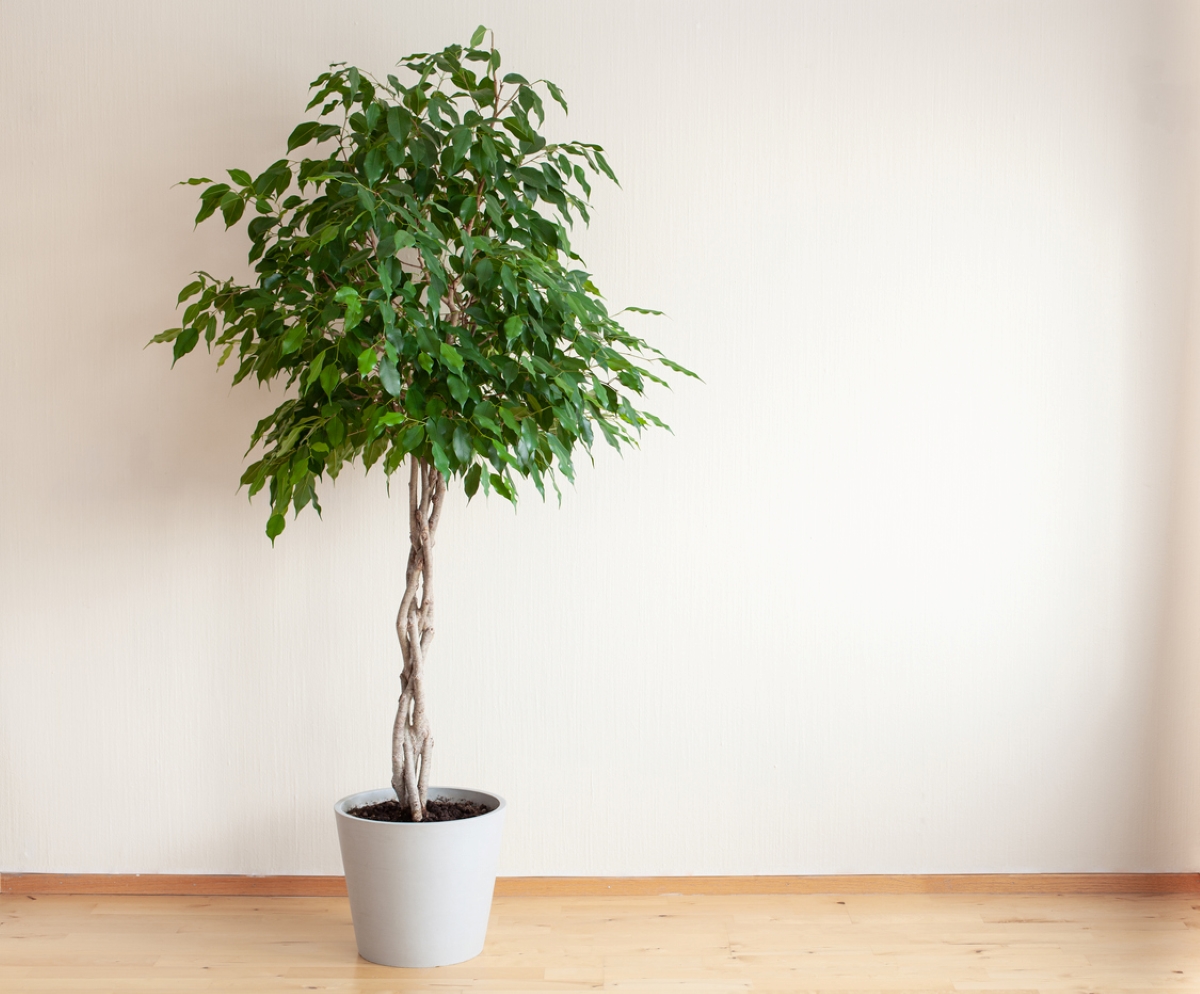
Ficus trees can grow quite tall when planted in the yard—up to 55 feet or higher—but when they’re planted in a container, they maintain a much smaller form, usually around 5 to 6 feet high. Also known as a weeping fig, the ficus tree can grow as a single specimen or in a tight grouping of three trees with their narrow trunks braided for a decorative look. The ficus tree features a leafy crown of glossy, dark leaves that will complement any decor.
While the ficus is hardy only in zone 10 or higher, it can be grown as an indoor potted plant in other zones. Consider moving it to a protected spot on the patio during the summer when nighttime temps won’t drop below freezing.
RELATED: The 22 Best Trees to Grow Indoors
2. Dwarf Peach (Prunus persica)
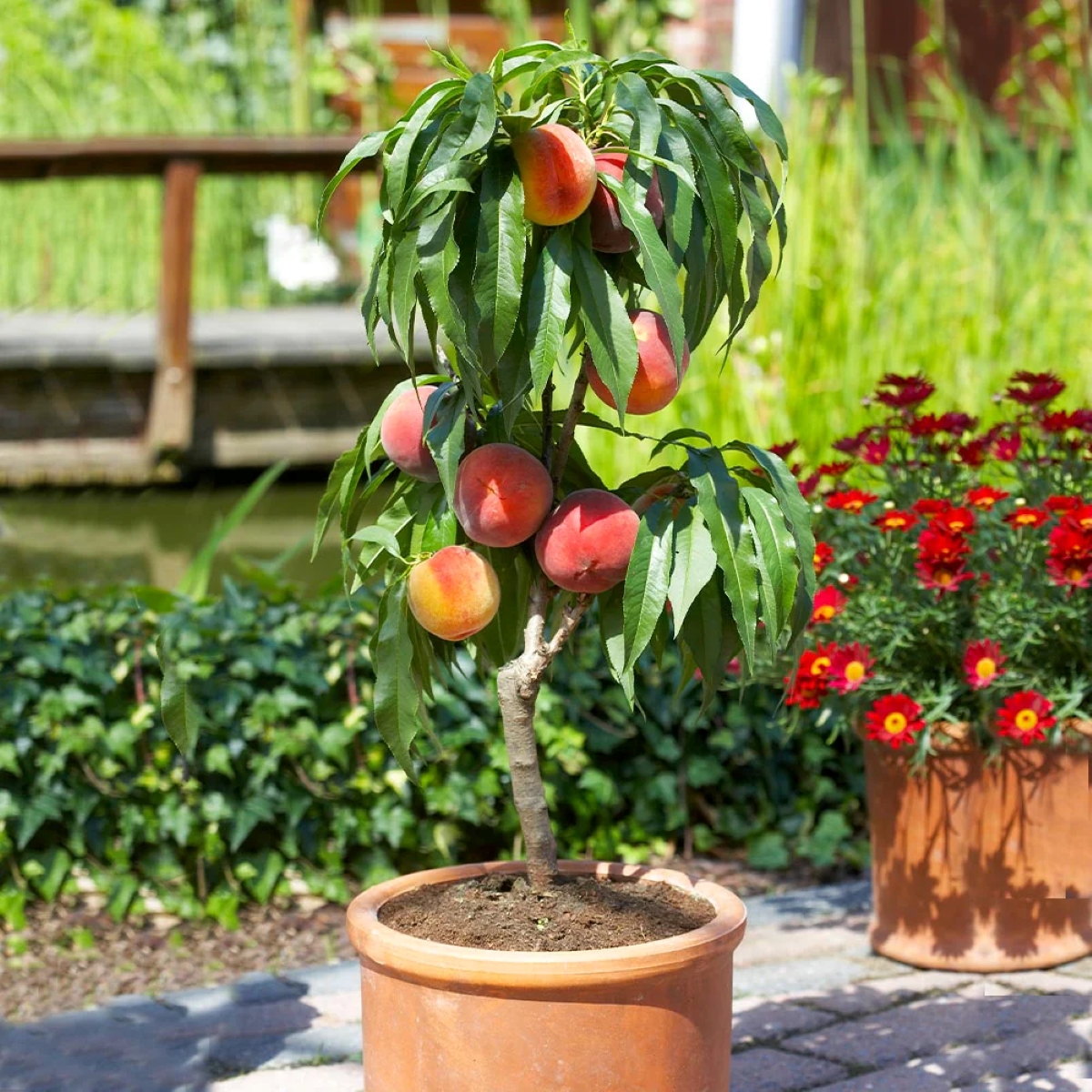
With a dwarf peach tree on the patio, you’ll be picking delicious, ripe peaches while enjoying the look of a specimen container tree. This small, attractive fruit plant can produce a couple of bushels of peaches each season. Peach trees thrive in zones 6 to 9, but might not fruit as much or as large when they spend the winter indoors because they need below-freezing temps to encourage peach development.
Some dwarf peach trees, however, need fewer cold hours. Bonanza is a dwarf variety that can produce fruit when wintered indoors. Golden Glory and El Dorado are dwarf varieties that won’t get taller than 5 to 6 feet. Whichever variety you choose, plant it in a container that holds at least 5 gallons of soil mix. Dwarf peach trees love a sunny spot on the patio or terrace.
3. Sweet Bay (Laurus nobilis)
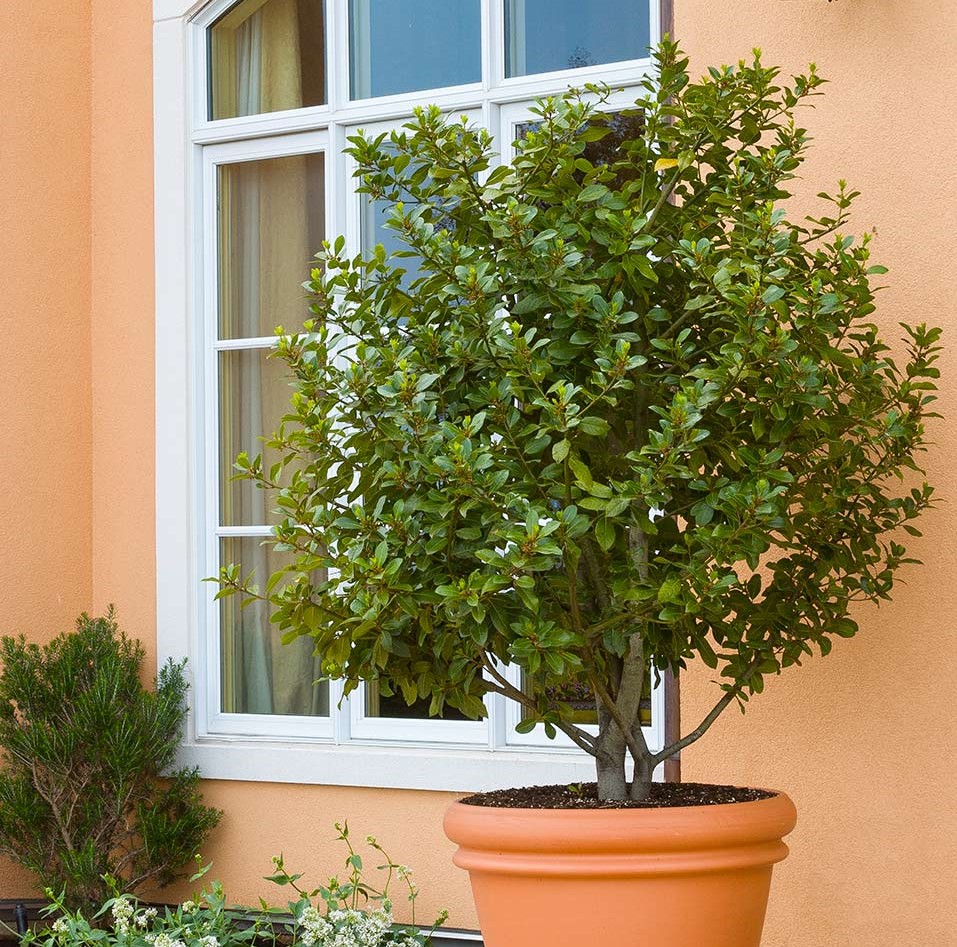
If you’re looking for an aromatic tree, look no further than sweet bay, whose dark green leaves are savory culinary herbs. Hardy in USDA Zones 8 to 10, sweet bay can spend the summer on the patio. In colder zones, it should be moved indoors for the winter, preferably to a sunny window and somewhere its aromatic scent can be enjoyed by passersby. This slow-growing evergreen tree will reach up to 8 feet when planted in a container. If you’re handy with pruning shears, shape laurel into a conical or globe shape for a geometric design element or topiary look.
RELATED: 18 Fast-Growing Shrubs to Plant This Fall
4. Crape Myrtle (Lagerstroemia)
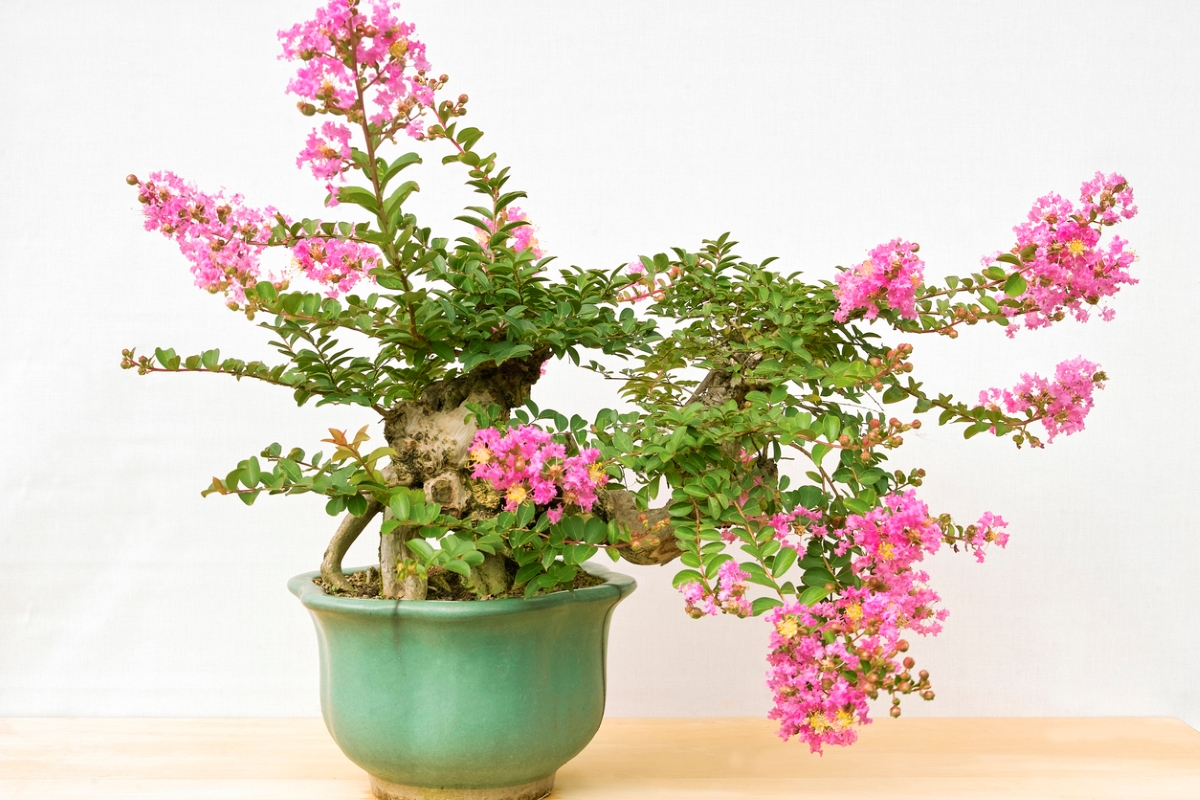
While crape myrtle can be pruned to a single trunk and made to look like a small tree, it’s really a shrub that bursts into showy blossoms that range in color from soft pink to deep purple and stunning red, depending on the species. In zones 6 through 9, crape myrtle can be left outdoors to overwinter, which is preferable to moving it indoors where it may drop most of its leaves. Crape myrtles are some of the showiest shrubs around and they will add a welcome splash of color to a patio or deck, blooming from summer until mid-fall.
5. Boxwood (Buxus spp.)
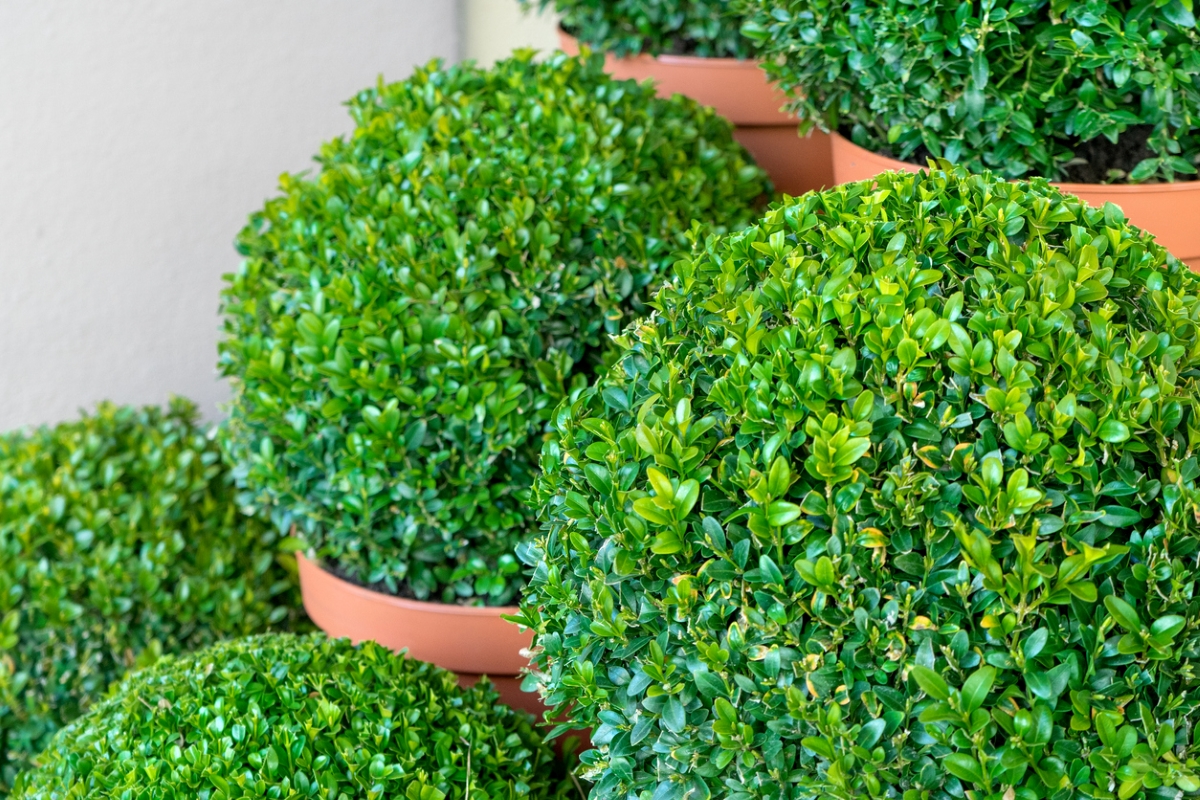
For lush deep-green to yellow-green foliage, it’s tough to beat boxwood shrubs, which come in a variety of species, all well-suited to containers. Some types of boxwoods, such as Petite Pillar Dwarf, grow in a tight, uniform oval shape with a more formal look, while others, such as Golden Dream, send out branches that casually drape over the edge of the planter or container. Buxus sempervirens ‘Arborescens’ is called tree boxwood for its dense growth.
Choose from dozens of species that range from 2 to 6 feet tall at maturity and are suited for zones 4 to 9 (check zones for individual species). One of the easiest shrubs to grow in a container, boxwoods will provide your patio with years of beautiful foliage, and will maintain their leaves even over winter.
RELATED: How to Grow Boxwood Shrubs
6. Dwarf Meyer Lemon Tree (Citrus x limon ‘Meyer’ )
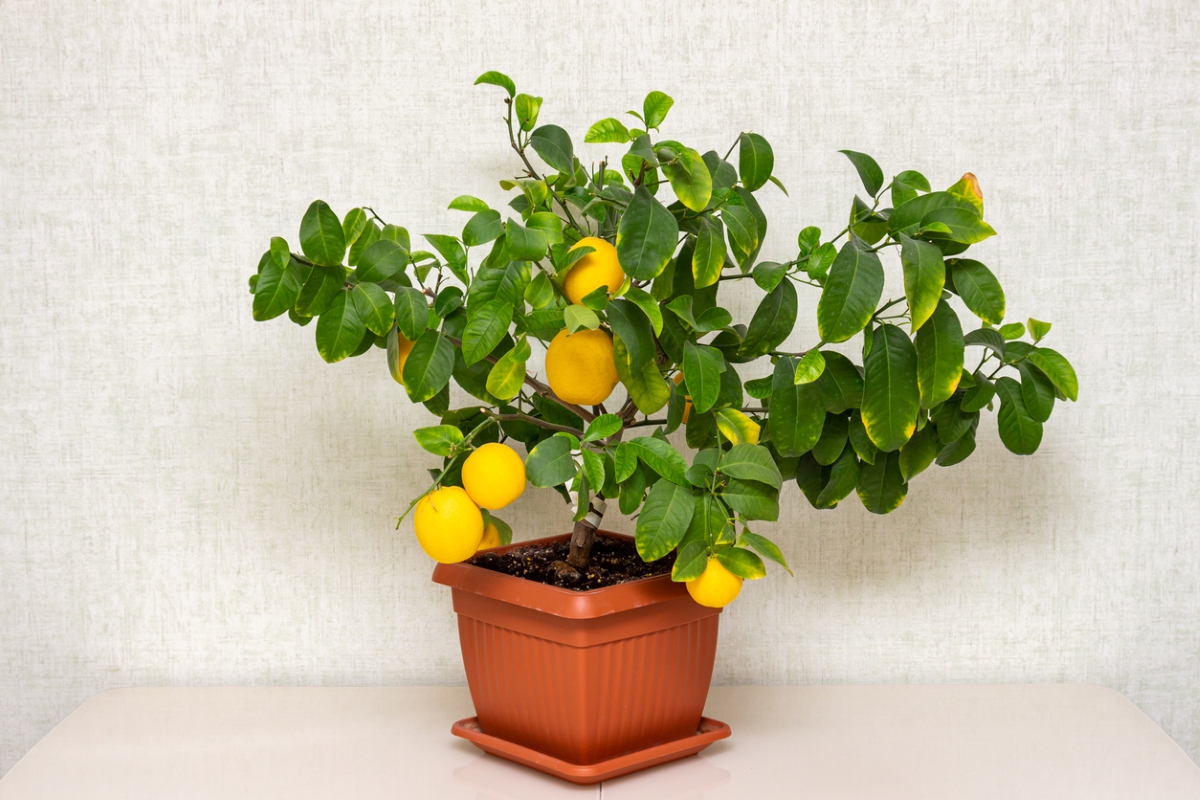
Grow a lemon tree in a container or pretty pot on your patio with a and enjoy fresh-squeezed lemonade on a hot summer’s day. The dwarf Meyer lemon tree reaches an average of 6 feet in height and will produce a bushel of bright lemon fruits preceded by heavenly scented white blossoms. While a dwarf lemon tree can be left outdoors in zones 8 to 10, it should be overwintered indoors near a sunny window in colder regions.
7. Hydrangea (Hydrangea spp.)
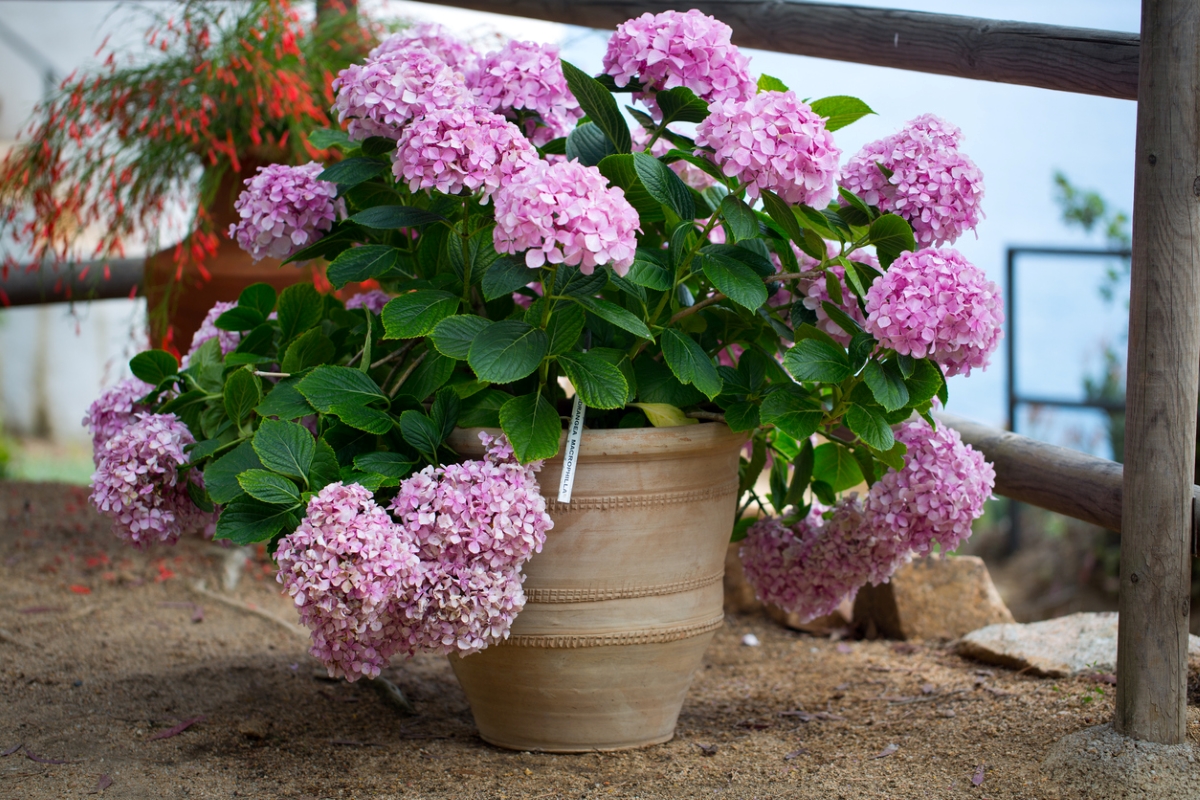
For a bevy of bountiful blossoms in colors ranging from white to purple (or even green), the hydrangea shrub is the way to go. Hardy in zones 5 to 9, the showy Hydrangea macrophylla thrives in large containers that will hold 6 to 8 gallons of growing mix, and the shrub requires well-draining, slightly acidic soil in order to maintain its bloom color.
A fertilizer made specifically for hydrangeas can help. Hydrangea can be left to grow as a shrub with wide-arching branches or trained to a single trunk for a tree-like appearance. In late spring, large clusters of blooms appear and will continue appearing until late summer. Some are more cold-hardy, so check individual species.
RELATED: Can Hydrangeas Grow in Pots?
8. Kumquat (Citrus japonica)
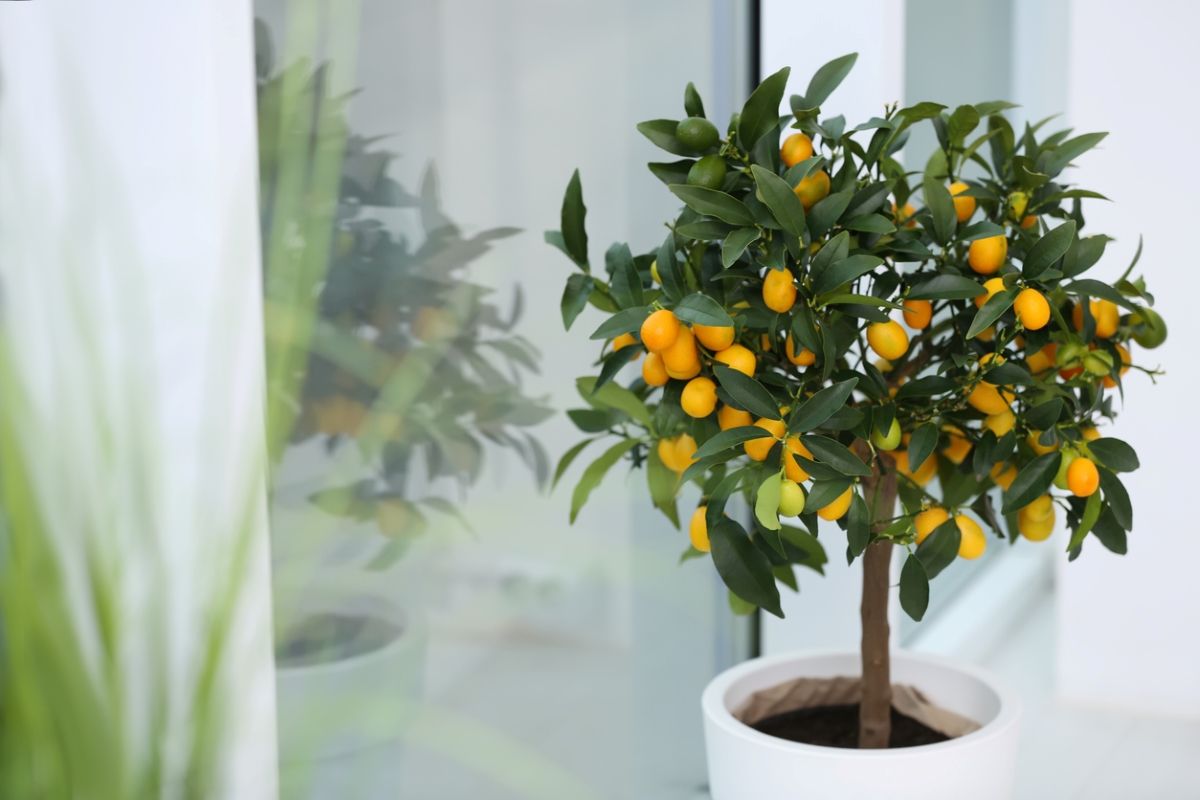
A kumquat tree will brighten a southern patio or terrace year-round in zones 9 to 11, and can bear edible citrus fruit 2 to 4 years after planting. In colder zones, plan to bring the tree indoors before the first frost, locating it in front of a sunny window to overwinter. In a container, the slow-growing kumquat tree typically reaches around 5 to 7 feet in height, although it can reach 13 feet when planted in a yard. These container fruit trees prefer well-draining soil and should be transplanted to a slightly larger pot every 2 or 3 years to give its roots a bit of room to grow.
9. Japanese Maple (Acer palmatum)
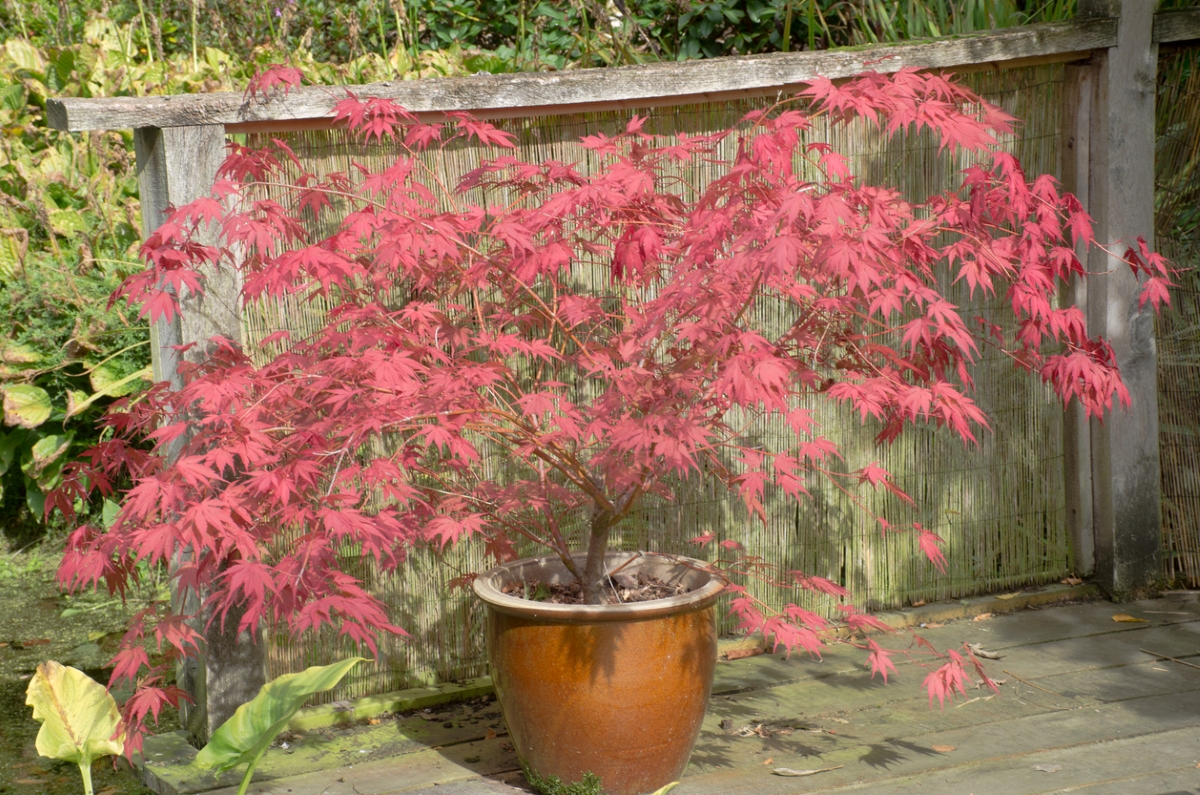
Available in dozens of species, the Japanese maple adds a graceful element to a patio container in zones 5 through 8. Prized for its delicate, feathery leaves that come in a range of colors, including bright red, variegated pink, and deep maroon, this slow-growing tree will become a focal point in the backyard. Opt for dwarf varieties such as Velvet Viking, Red Dragon, or some Rhode Island Red types, which reach a mature height of about 7 feet, making them the perfect accent in a courtyard. In zones colder than 5, this small tree should be overwintered indoors.
RELATED: The 20 Best Dwarf Trees for the Front Yard
10. Golden Sword (Yucca filamentosa ‘Golden Sword’)
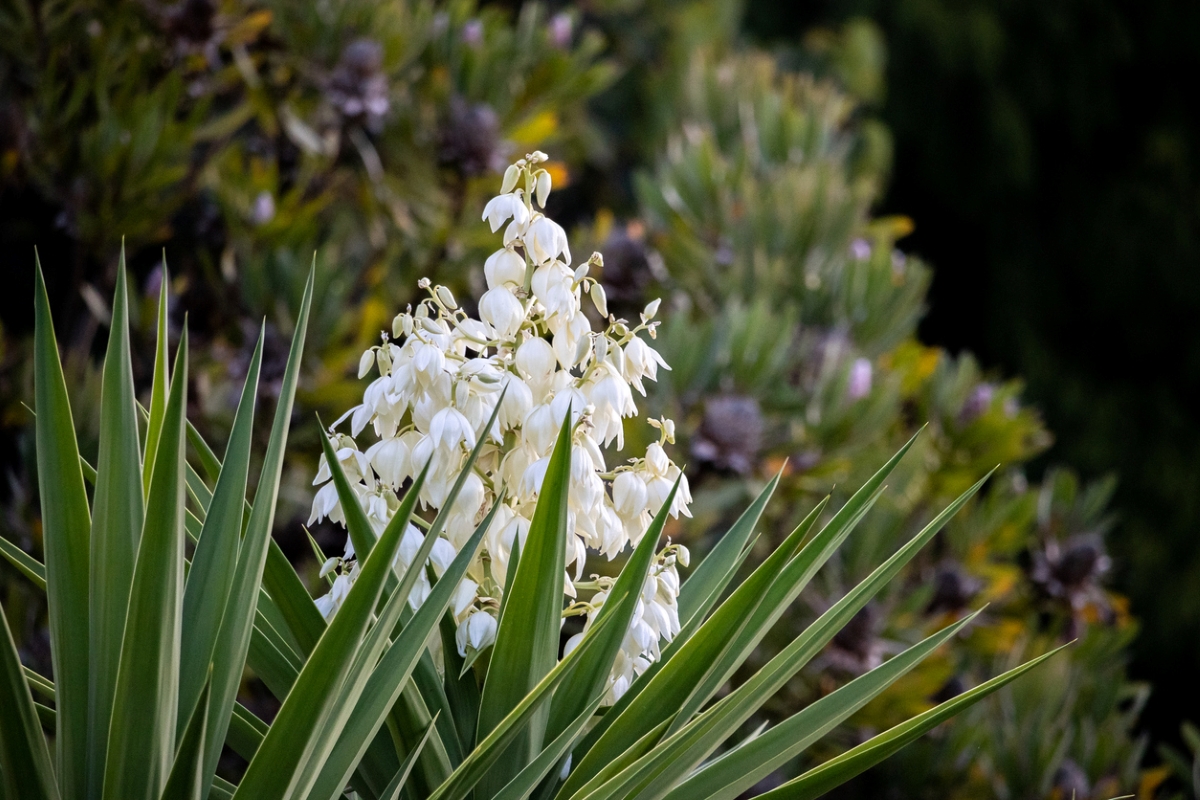
With striking (and sharp) muted-yellow, sword-like leaves, the golden sword shrub sends up tall floral spikes in late spring and early summer topped with dramatic clusters of white blooms. Also known as Adam’s needles, this low-maintenance container shrub tolerates hot temps and moderate droughts. It will add texture and interest to any patio, but it’s especially prized in Southwestern-themed yards.
The yucca needs a sunny spot and well-draining soil and is well suited to zones 4 to 9. The shrub reaches up to 3 feet high at maturity and the flower spikes can extend as high as 6 feet tall.
11. Olive (Olea europaea)
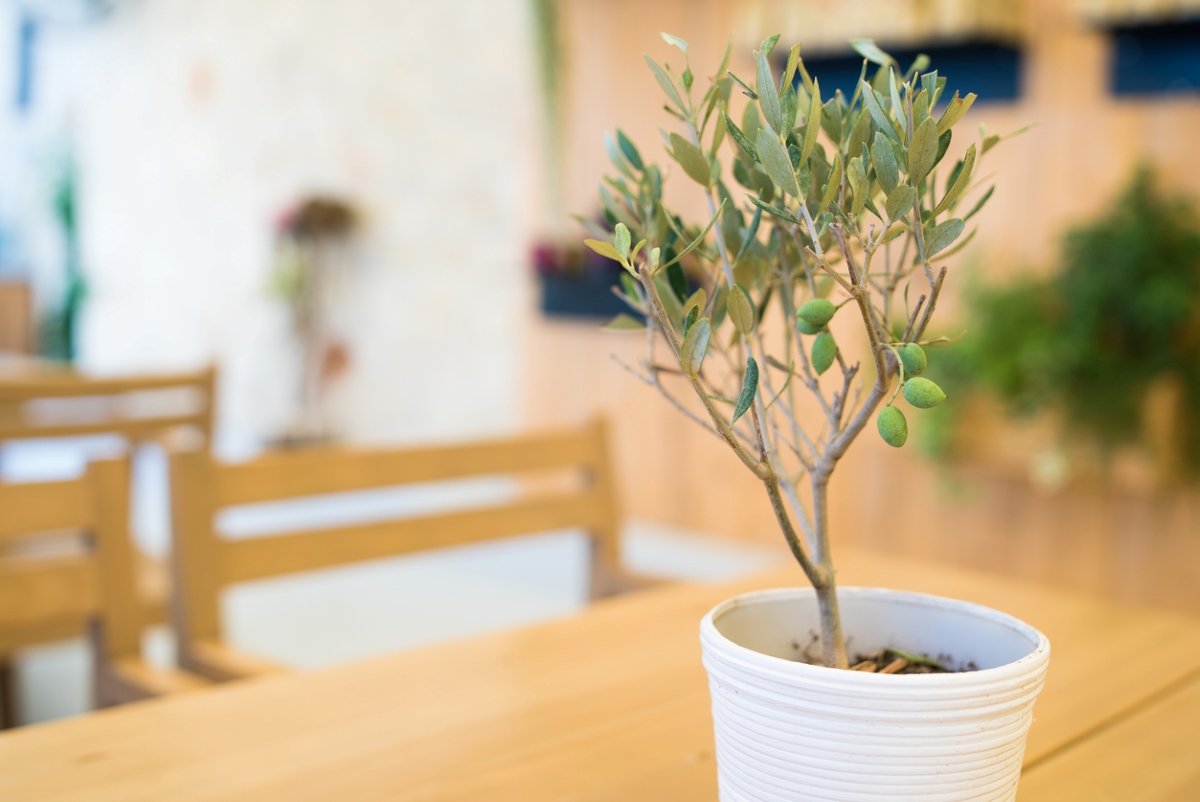
Say you’re living in an apartment with a balcony while you save for a house. Now’s the time to get an olive tree. It will do well in a container for 8 or 9 years before needing to be planted in its final home: the yard at your new house in warmer zones (8 and above). Gardeners in USDA Zone 7 and below will have to overwinter their olive trees indoors, and hope they can keep it happy as it ages in its container. Repotting every couple of years, using proper well-draining, rocky soil, will help.
RELATED: 20 Huge Houseplants That Make a Statement
12. Daphne (Daphne spp.)
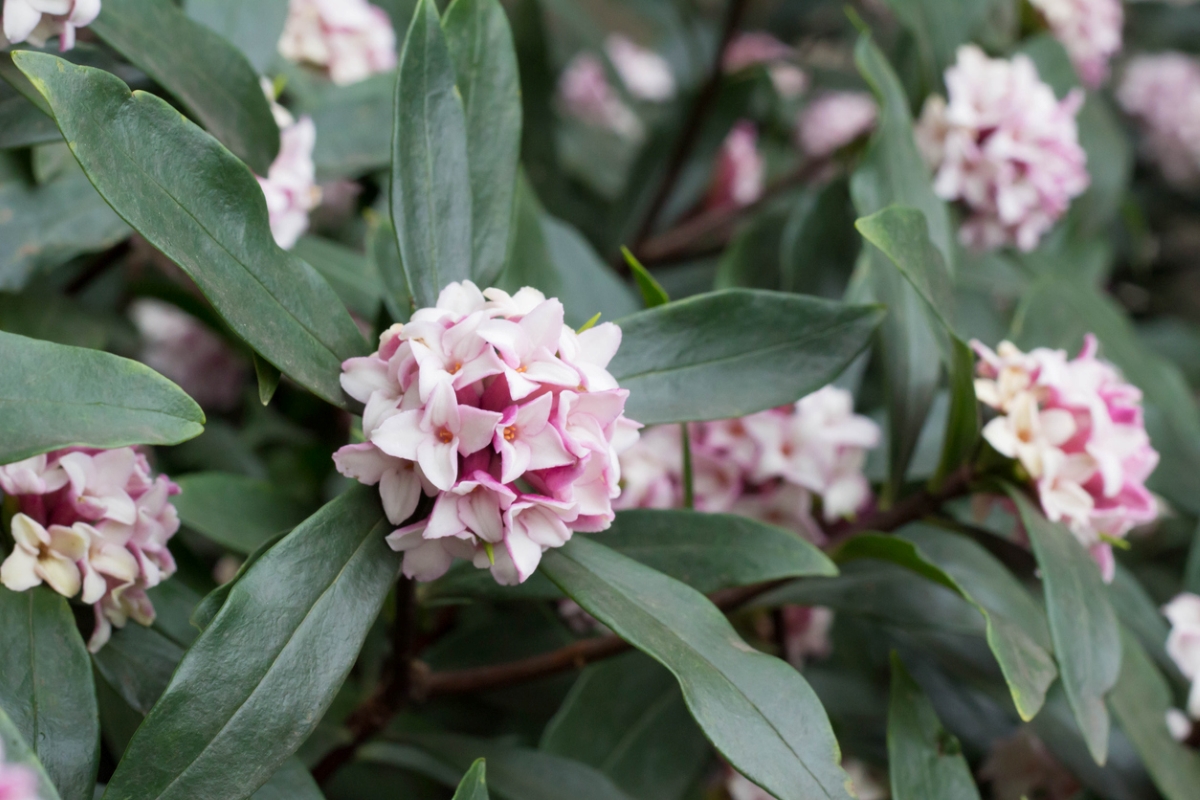
Daphnes are slow-growing shrubs prized for their intoxicating fragrance. Gardeners in zones 4 through 9 will likely be able to grow D. burkwoodii year-round on a semi-shaded patio, whereas gardeners in chillier areas will have to overwinter this and other daphnes indoors. These evergreen shrubs are deep-rooted, so choose a tall pot and a variety that doesn’t grow very large. Bear in mind that this plant is toxic to pets and people.
13. Cherry Laurel (Prunus laurocerasus)
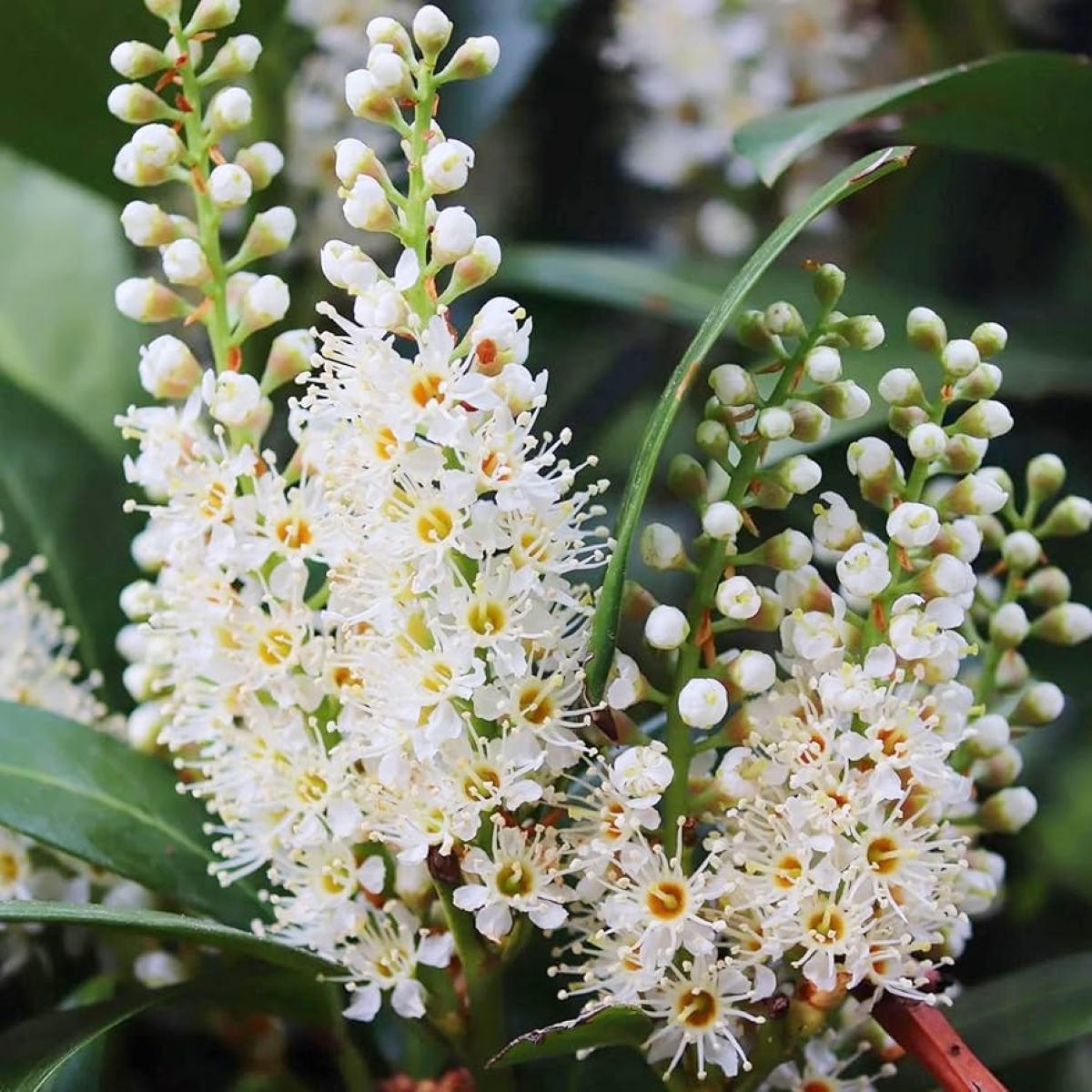
A fast grower that can be pruned into a tree shape or left shrubby, cherry laurel is an evergreen plant that produces fragrant flowers in spring. Plant it in a large container—at least 5 gallons—and place the container in a full- to part-sun location. Though it is drought-tolerant, cherry laurel does need rich soil that drains well. Prune it annually to keep it in control, and plan to bring the evergreen shrub/small tree indoors to overwinter if you live north of zone 6 for most varieties. Cherry laurel, too, is toxic for animals and humans.
RELATED: 20 Evergreen Shrubs to Beautify Your Garden Year-Round
14. Bougainvillea (Bougainvillea spp.)
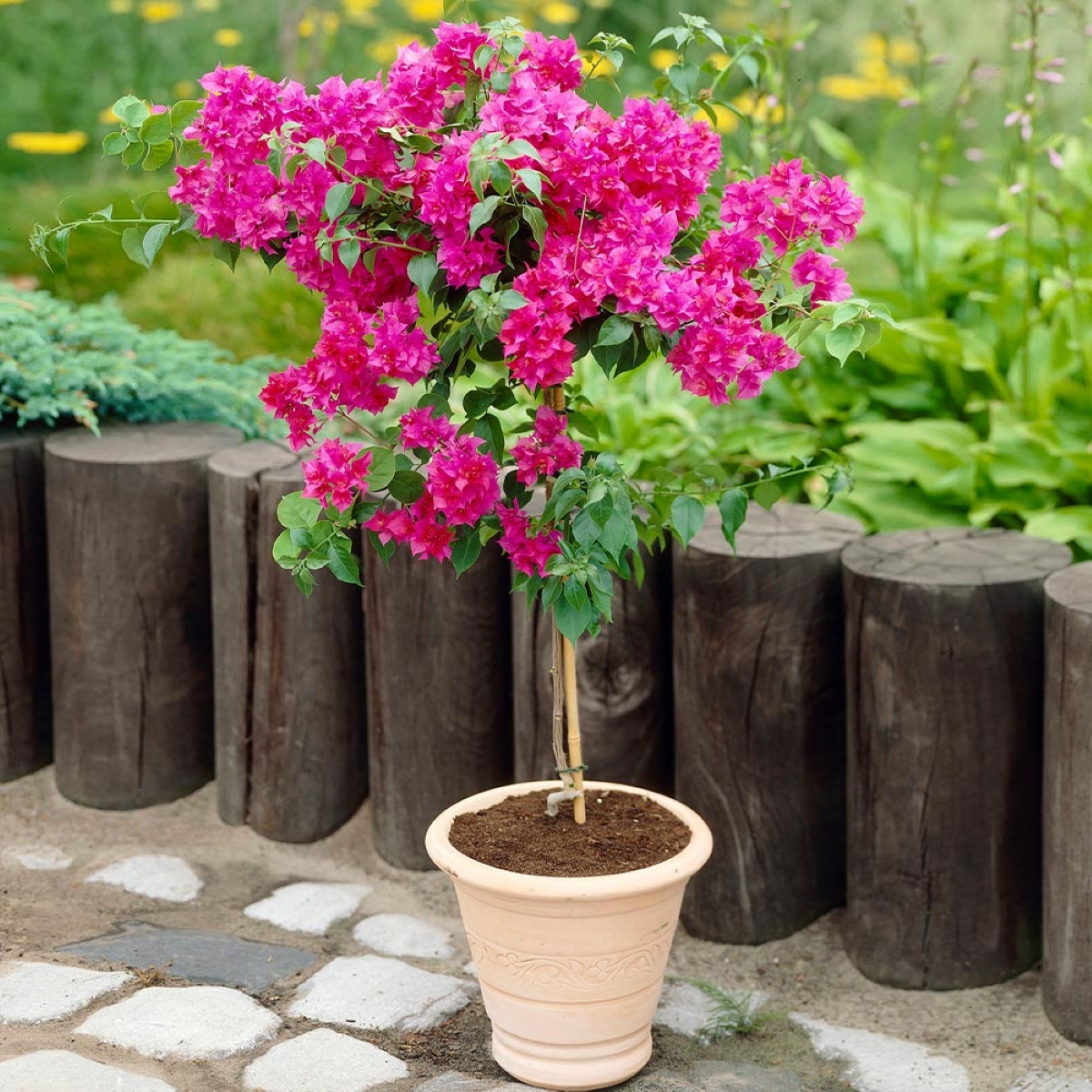
Pretty in pink, bougainvillea is a favorite of container gardeners. This South American native is famous for its climbing abilities, but it can also be pruned into a large bush shape. Because this tropical plant is hardy only in zones 9 to 11, most U.S. gardeners will have to bring bougainvillea indoors come winter. As you consider this plant and where to place it, however, remember its thorny foliage and place it where it will protect kids and pets. The plant is drought-tolerant when established, and favors soil that is equal parts clay, sand, and silt. It’s OK being rootbound, so you won’t have to repot bougainvillea often.
15. Witch Hazel (Hamamelis virginiana)
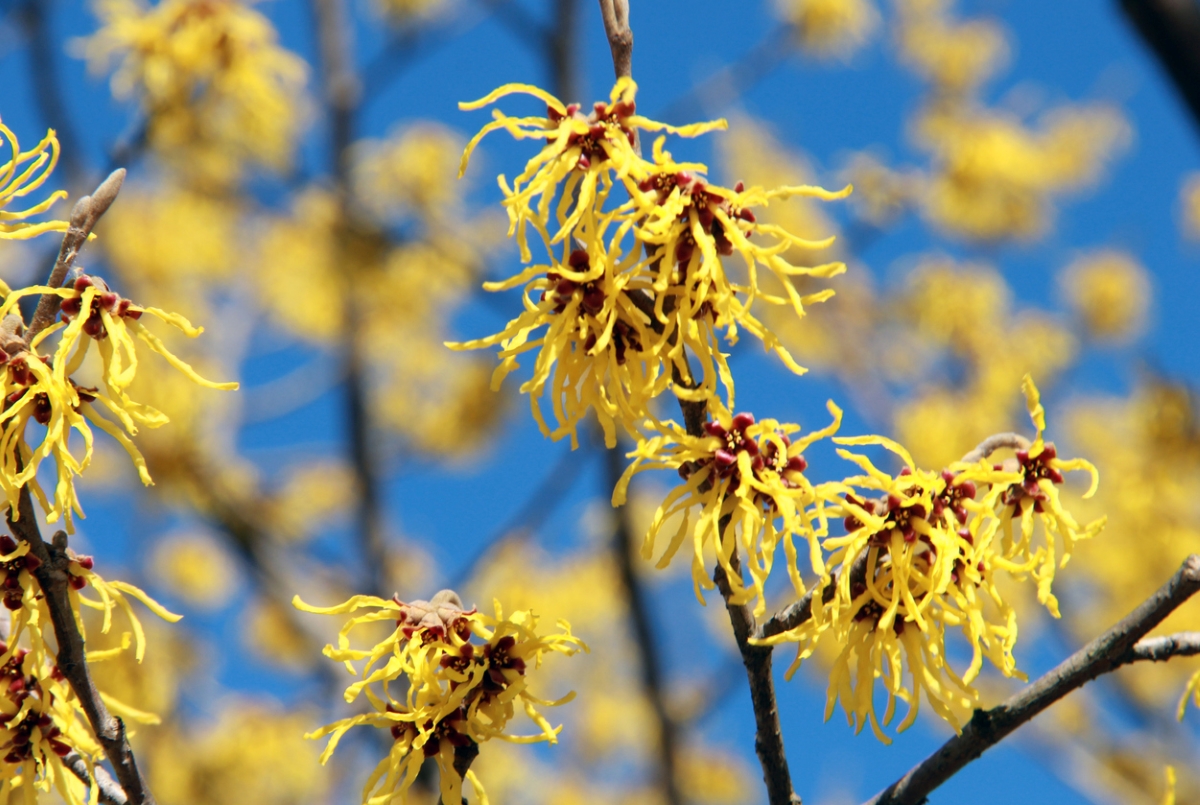
If low maintenance is appealing, consider any of several varieties of witch hazel that do well in containers. In October or November, this small tree/large shrub produces fragrant flowers composed of delicate ribbon-like petals that are typically yellow, but can be light orange, pink, or red in some cultivars. Most do well in zones 3 to 8, and prefer full sun, though in very hot climates, they appreciate afternoon shade. Beloved for its medicinal properties, witch hazel is a slow grower and will remain content in its pot for many years. It prefers loamy, well-draining soil that is kept moist.
